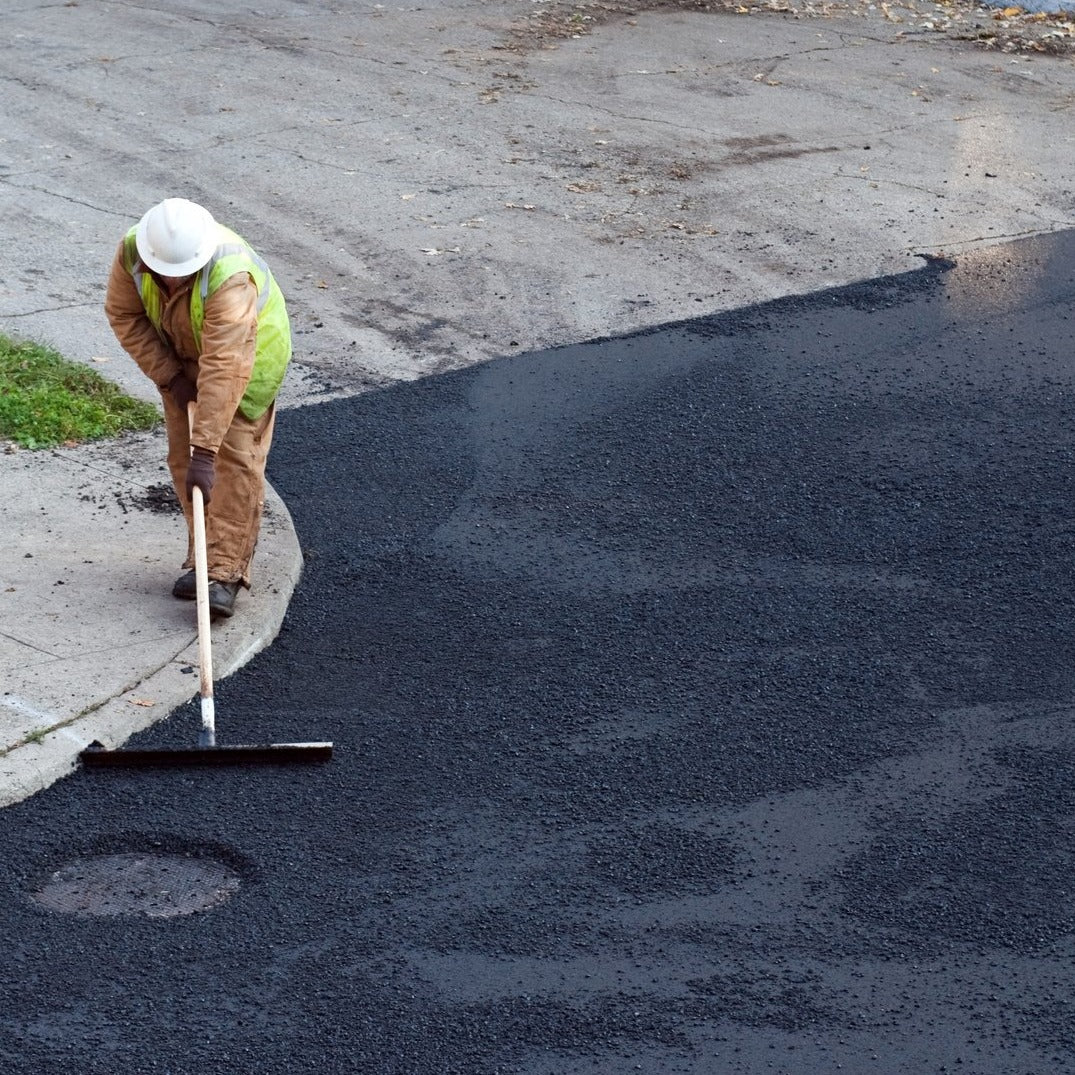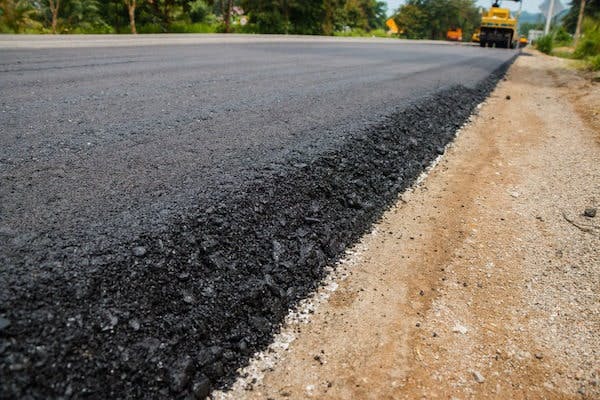Maximize Area Effectiveness with Hot Mix Asphalt Angled Parking Lot Solutions
Maximize Area Effectiveness with Hot Mix Asphalt Angled Parking Lot Solutions
Blog Article
Opening the Tricks of Warm Mix Asphalt Innovation
Checking out the midsts of warm mix asphalt modern technology discovers a world where precise formulas and careful procedures assemble to shape our roads and facilities. The combination of binders, fillers, and aggregates isn't merely a building job yet a strategic orchestration of resilience and performance. As we peer into the intricate dancing of elements, a tapestry of strength and sustainability unfolds. What exists underneath this surface of asphaltic proficiency, and what secrets wait to be revealed in the world of paving technologies?
Significance of Hot Mix Asphalt
Warm Mix Asphalt plays a crucial function in modern framework growth because of its longevity and cost-effectiveness. As one of the most typically utilized paving material for roads, highways, and auto parking lots, Warm Mix Asphalt offers a variety of advantages that add to its significance in building and construction projects. One essential benefit is its capacity to endure rush hour loads and harsh climate condition, supplying a dependable and resilient surface area for transportation networks. Furthermore, Warm Mix Asphalt is cost-effective in both preliminary building and construction and long-lasting maintenance, making it a favored option for many facilities projects.
The sturdiness of Hot Mix Asphalt comes from its make-up, which consists of aggregates, binder, and filler materials that are carefully chosen and mixed to satisfy particular performance needs. This exact mix causes a adaptable and solid sidewalk that can withstand constant use without considerable damage. Moreover, Hot Mix Asphalt is 100% recyclable, additional enhancing its sustainability and ecological benefits. Overall, the relevance of Hot Mix Asphalt in infrastructure advancement can not be underrated, as it remains to be a keystone of modern-day building and construction practices.
Components of Asphalt Mixes
The composition of asphalt mixes contains very carefully selected aggregates, binder, and filler products that are vital for accomplishing details efficiency requirements. Accumulations are the key part of asphalt mixes, giving stamina and stability. These accumulations can be all-natural, such as crushed rock or crushed rock, or artificial, like recycled products from old pavements. The binder, normally bitumen or asphalt concrete, holds the aggregates together and gives adaptability and toughness to the mix. The choice of the binder is important as it directly affects the mix's efficiency in different weather conditions. Fillers, such as hydrated lime or Portland cement, are made use of to boost the mix's workability and aging resistance. Angled Parking.
The mix and percentage of these elements play a considerable duty in identifying the high quality and efficiency of the asphalt mix. Engineers thoroughly make the mix to fulfill details demands, considering elements like web traffic volume, environment conditions, and sidewalk lifespan. Appropriate selection and harmonizing of aggregates, binder, and fillers are vital for developing resilient, resilient asphalt sidewalks.
Combining and Manufacturing Strategies

As soon as the aggregates are chosen, the binder, usually asphalt cement, is included in bind the products with each other. The binder's high quality and amount significantly affect the mix's stamina, adaptability, and resistance to environmental commercial parking lot paving elements. Additionally, fillers like hydrated lime or Portland concrete may be incorporated to boost specific characteristics of the asphalt mix, such as its workability or moisture resistance.
During production, the accumulations and binder are heated, commonly in between 250-325 ° F(121-163 ° C ), to facilitate mixing and guarantee correct coating of the accumulations. The blending procedure has to be thorough to attain an uniform combination that advertises the preferred efficiency characteristics of the asphalt. Various strategies, such as batch mixing or drum blending, are used to attain high-grade and regular asphalt blends for building and construction tasks.
Variables Affecting Asphalt Efficiency
Factors influencing asphalt efficiency encompass a series of variables that impact the durability, long life, and overall high quality of asphalt pavements. One essential variable is the high quality of materials used in the asphalt mix. The type and source of aggregates, the binder high quality, and the additives all play a substantial duty in establishing the efficiency of the asphalt pavement. The rank of aggregates is essential as it influences the mix's stability, workability, and resistance to cracking and rutting.

Environmental problems likewise influence asphalt performance. Temperature level variations, moisture infiltration, and web traffic tons can all influence the architectural honesty of the sidewalk. Style considerations, such as pavement thickness and drainage, are vital in guaranteeing the lasting performance of the asphalt sidewalk. By very carefully considering these professionals, factors and designers can optimize asphalt efficiency and enhance the solution life of sidewalks.
Sustainable Practices in Asphalt Modern Technology

Furthermore, the advancement of warm-mix asphalt (WMA) innovations has gained traction in recent times. WMA enables the manufacturing and positioning of asphalt blends at reduced temperature levels compared to traditional hot-mix asphalt, resulting in minimized energy consumption and greenhouse gas discharges. In addition, the use of porous asphalt blends can assist minimize stormwater overflow concerns by enabling water to infiltrate with the sidewalk and into the ground, promoting all-natural water filtering and reenergize procedures. By implementing these lasting techniques, the asphalt market can add to developing a much more resilient and eco friendly facilities network.
Conclusion
In verdict, hot mix asphalt modern technology plays a critical function in modern facilities growth due to its toughness and cost-effectiveness. By very carefully stabilizing parts, employing proper blending strategies, and taking into consideration numerous factors, engineers can create high-grade asphalt mixes that hold up against hefty traffic lots and harsh climate condition. Welcoming lasting methods, such as making use of warm-mix modern technologies and recycled materials, even more improves the ecological friendliness of asphalt technology.
Blending and production techniques in hot mix asphalt modern technology involve the precise combination and handling of accumulations, binder, and fillers to develop a high-performance and sturdy asphalt mix.Variables influencing asphalt performance include a range of variables that influence the toughness, durability, and overall top quality of asphalt sidewalks. Lasting techniques in asphalt modern technology encompass numerous initiatives intended at lowering the environmental effect of asphalt manufacturing and paving processes. By incorporating recovered asphalt pavement (RAP) and recycled asphalt roof shingles (RAS) into brand-new asphalt blends, the sector can significantly reduce the intake of raw materials and energy, while additionally decreasing land fill waste.
WMA permits for the manufacturing and placement of asphalt blends at lower temperature levels contrasted to typical hot-mix asphalt, resulting in minimized power consumption and greenhouse gas emissions.
Report this page